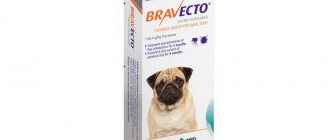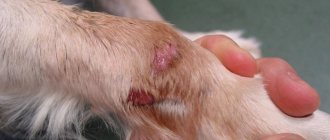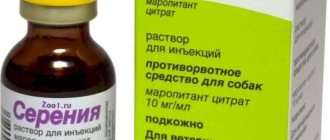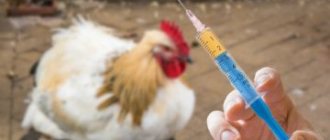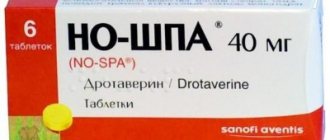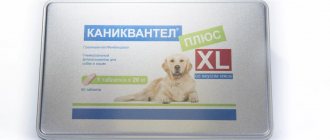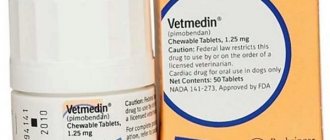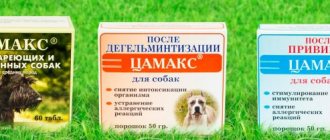All kinds of parasites, and especially fleas, are inevitable companions of domestic cats. Even pets without free range are sometimes subject to invasion by ectoparasites. Frontline for cats will help you fight them. If you read the reviews, it becomes clear that it compares favorably with its analogues in terms of safety and ease of use. Especially if the instructions for use were not ignored.
Types of Frontline for cats
Frontline for cats contains the substance fipronil, which is poisonous to fleas and ticks. Organic compounds are used as additional components: butylhydroxyanisole, ethanol, butylhydroxytoluene, excipient. Fipronil accumulates in the animal's skin (hair follicles, sebaceous glands, epidermis) and, when bitten, enters the parasite's body. The poison causes paralysis of the insect and its death.
After processing the animal, at least 24 hours must pass. This time is necessary for the uniform distribution of fipronil over the skin. The drug does not enter the cat’s blood or digestive tract. A sufficient concentration of the active substance remains in the pet’s body for up to 45-60 days. After this, re-processing is necessary.
The manufacturer of the drug Frontline is the French pharmaceutical company Merial. The insectoacaricidal agent is available in different forms: in the form of drops, spray. The choice of a suitable variety is determined by the degree of infection, the susceptibility of the organism and the purpose of treatment (treatment, prevention).
Drops Combo
Frontline Combo in drop form contains, in addition to fipronil, another active substance S-methoprene. The amount of these compounds is approximately the same - 9.8% and 8.8%, respectively. Frontline drops are a colorless, transparent solution with a pungent odor. Standard packaging volume is 0.5 ml. But in pet stores you can sometimes find a 0.67 ml package; 1.34 ml; 2.68 ml and 4.02 ml.
Frontline Combo acts on all stages of parasite development: adults, larvae, eggs
Drops Spot It
In terms of its organoleptic properties, Frontline Spot is reminiscent of Combo. This product is also colorless, transparent and has a slight specific odor. The liquid is in a pipette. Apply it to the animal's skin in places inaccessible to licking. There are different packaging available for sale: 0.5 ml; 0.67 ml; 1.34 ml; 2.68 ml and 4.02 ml. There is only one active ingredient – fipronil, the share of which in the drug is 10%.
Spray
The aerosol form of the medicine is convenient for treating the entire surface of the animal against parasites. The bottles have different volumes: 100, 250 or 500 ml. With one press of the spray of the first dosage, 0.5 ml of the drug gets onto the fur. From a larger volume bottle, up to 1.5 ml of solution comes out with one press. These numbers are used to calculate the dose based on the weight of the pet. Frontline spray is convenient not only for treating a cat’s fur, but also its bedding and carpets.
Composition and release forms of the drug
The French company Merial produces several types of insectoacaricidal drug called Frontline. The main active ingredient of the drug is fipronil. Depending on the form of release, the active substance is found in different concentrations, or in combination with other potent substances, providing an integrated approach to the destruction of ticks and fleas.
The drug is released in several forms:
- Frontline Combo;
- Frontline Spot On;
- Frontline NexgarD;
- Frontline Spray.
The main active ingredient in any form of the drug (except NexgarD) is fipronil, which is the strongest contact and intestinal insecticide. It has a broad spectrum of action, suppressing the activity and destroying lice, fleas, lice, ixodid ticks, cheyletiella and mites that cause ear scabies.
The action of fipronil is aimed at blocking GABA-dependent receptors of parasitic organisms. Under the influence of an insectoacaricide, the transmission of nerve impulses in ectoparasites is disrupted, which ultimately leads to complete paralysis and death.
When applied to the skin, fipronil is practically not absorbed, being evenly distributed over the surface of the body within 24 hours. The duration of action of the drug is due to the fact that it is able to accumulate in the sebaceous glands of mammals.
Note! As part of Frontline, fipronil is present in such dosages that it does not have a pronounced toxic effect, without causing mutations and deformities, which makes it possible to use the drug to kill fleas and ticks on the body of pregnant females.
Pharmacological effect
The effectiveness of the drug is based on the action of the active component afoxolaner, an insectoacaricide of the isoxazoline group, which has a systemic effect on ectoparasites. This substance causes blocking of nerve endings, disabling the nervous system of harmful organisms, as a result of which they die.
Oral administration ensures ease of absorption in the gastrointestinal tract and speed of penetration into the systemic circulation. Bioavailability indicator – 74%. The active substance has a slow metabolism and is partially excreted by the liver and during urination.
According to GOST, the level of exposure of Frontline NexgarD is defined as low-hazard for the body of four-legged human friends; if the dosages recommended by the manufacturer are followed, no teratogenic, embryotoxic, mutagenic effect or local irritant reactions are observed.
Frontline Combo
Frontline Combo is a drug intended for external use; it consists of drops that must be applied to the cat’s withers.
In addition to the main substance fipronil, Frontline Combo contains:
- S-methoprene (an analogue of juvenile hormone, controls the growth of insects and parasites, suppresses the development of immature forms of parasites at the stage of eggs, larvae and pupae);
- polysorbate (a surfactant that improves gliding and softens the skin);
- polyvidone (binds toxic substances circulating in the bloodstream from parasites and removes them from the body)
Frontline Spot On
It is also available in the form of drops, which must be applied to the animal’s withers. This is the classic form of the drug, which works as a result of the accumulation of an insectoacaricidal agent in the sebaceous glands of the animal, allowing to protect the pet for a period of up to 30 days.
Frontline Spot It is available in blue pipettes and contains, in addition to fipronil, the following substances:
- butylated hydroxytoluene (E 321, antioxidant);
- ethanol (ethyl alcohol);
- butylated hydroxyanisole (E320, an antioxidant that suppresses oxidation processes);
- excipient (an excipient that does not have pharmacological or immunological effects, used for better mixing of components).
Frontline Spray
Available in the form of a solution, packaged in polyethylene bottles of 100 and 250 ml.
In addition to fipronil, the drug contains:
- copovidone (systemic detoxifier);
- isopropanol (alcohol-based organic solvent);
- purified water.
Efficiency
The effect of drops against ticks in dogs lasts 1 month, in cats - 3 weeks, against fleas - 2-3 months. After the specified period, re-processing is required. After application, Frontline is completely absorbed and begins to act within 24 hours. But before visiting places dangerous for animals, it is recommended to carry out the treatment 2-3 days in advance.
On a note!
The effectiveness of Frontline is not affected by rain or hot weather, but the properties decrease with frequent use of detergents. You should bathe your pet no more than once a week. Otherwise, dogs should be re-treated for ticks after 2 weeks, and cats – 10 days.
Side effects, overdose
Scientific research has proven that even with a threefold overdose, no side effects are observed. However, in some cases, salivation may be present, which is a reaction to the filler that is part of the product (an alcohol solution is used as a filler).
Frontline spray usually does not cause side effects, but if you are hypersensitive to the components of the drug and signs that accompany allergic reactions are detected, further treatment should be stopped and the applied drug should be washed off with water. If necessary, animals are prescribed antihistamines.
Recommendations
There is no need to bathe the animal 2 days before and 2 days after treatment. Until the fur is completely dry, you need to make sure that the animal does not lick the drug. Also, do not allow it near heating devices or open fire. Young children should be excluded from contact with the animal for 24 hours. During this time you cannot pet him. To avoid re-infestation and prevent fleas from breeding, the bedding should be replaced. In addition, the following rules must be observed:
- after applying the spray, you should wash your hands with soap;
- when applying the product, do not eat, drink or smoke;
- the drug should be stored out of the reach of children.
High effectiveness of the drug is achieved by following the recommended regimen of its use. When using the product, you should not use other insectoacaricidal drugs.
Advantages and disadvantages of products
The history of the use of the pharmaceutical drug in veterinary practice allows us to place Frontline for cats on a par with other known products against fleas and ticks. The ratio of pros and cons determines the feasibility of its use. The advantages of the drug are:
- Highly effective against several types of ectoparasites.
- Wide range of effects (acts on different stages of development).
- Prolonged period of activity of fipronil.
- Harmlessness of active ingredients for the pet itself.
- Can be used for kittens and pregnant cats.
- Convenient application of the product to the fur or skin of an animal.
Frontline Spot On, Combo and Spray have their drawbacks. So, the liquid product must be dosed strictly, based on the cat’s weight. If the amount of the drug is insufficient, the effect is not achieved. Exceeding the optimal dose may have a negative effect on your pet's health.
When spraying Frontline spray, it may come into contact with the cat's mucous membranes. This causes local irritation and redness. If such a nuisance occurs, the cat should immediately rinse its eyes and nose with running water. The pet cannot be petted or bathed for two days. The use of a toxic liquid requires strict adherence to hygiene rules (washing hands after handling).
Frontline has a characteristic unpleasant odor that not all cats like
Precautionary measures
When working with insecticides, important rules should be observed:
- use rubber gloves;
- to avoid breathing toxic fumes, wear a medical mask;
- give up food, drinks and smoking;
- wash your hands with soapy water;
- Do not allow children to play with the animal during the day;
- In some cases, the drug may come into contact with the body or eyes. If this happens, immediately remove the product with warm water;
- keep medications out of the reach of children;
- used pipettes must be disposed of;
- do not throw the drug into water sources, as it is quite toxic;
- Before using the substance for kittens, consult a veterinarian;
- Expired Frontline medicine is not suitable for use.
Analogues of the drug
When choosing analogues of Frontaline, it is necessary to note the effectiveness, as well as the smallest number of side effects that occur when treating cats.
Potential analogues of Frontline are the following insectoacaricides:
- Advantix drops (Bayer, Germany);
- Bolfo spray (Bayer, Germany);
- Ultra Guard drops (Hartz, USA).
Before starting to use any type of antiparasitic medication, you should always consult with a veterinarian.
Answers to popular questions
Many cat owners are interested in questions related to the nuances of using Frontline
Since the cat is a member of the family, and the health of the pet is under the close attention of the owners, they are looking for answers to their questions related to the treatment of the cat’s skin and further actions
Is it possible to scratch after treatment?
After treatment, touching the cat is not allowed. The procedure must be carried out with rubber gloves to prevent contact of the substance with your hands. The drug is applied to the clean skin of the cat, from where, due to its accumulative properties, it is gradually absorbed into the sebaceous glands, mixed with skin secretions and acts on parasites, causing their death. If you scratch your cat after applying the drug, microcracks may form, through which the product will enter the bloodstream and cause a negative reaction.
Can it be used on a dog?
It is perfectly acceptable to use Frontline on a dog. The manufacturer produces a separate type of drug in the form of a spray and drops, intended for treating dogs. The amount of medication used depends on the dog's weight.
Is it possible to divide by less?
When separating the contents of the pipette, there is a risk of violating the dosage of the active component and the alcohol-containing element, which will lead to the ineffectiveness of the medicine.
Is it okay for pregnant cats?
The drug Frontline has been tested in clinical conditions and is considered an absolutely safe treatment for cats during pregnancy.
Is it possible to put drops in the ear?
You can put Frontline drops into your ear if you are infected with ear mites. The procedure must be performed by a veterinarian in a clinic setting. The ears must be clean so that no dirt remains deep in the ear.
To treat ear mites, a spray is also used, which is sprayed into the auricle after preliminary cleaning.
Is it possible to pet a cat?
Touching a treated cat is prohibited, especially for children and people prone to allergies. The cat should not be petted until the area where the drug is applied is completely dry (about 24 hours). It is not allowed to take a treated animal into bed.
Is it possible to wash a cat?
Bathing with (or without) shampoo 1 hour before treatment does not affect the effectiveness of the drug, provided that the pet’s fur and skin are completely dry. Washing or bathing the cat is allowed 48 hours after treatment.
Indications for use
According to the instructions, Frontline for cats is used for preventive and therapeutic purposes. It helps get rid of many parasites and prevent infection by them. The use of drops and spray is justified for the following problems:
- Fleas;
- Ticks;
- lice eaters;
- Cheylitelas;
- Otodexodes;
- Lice.
For the treatment of otodectosis, only Frontline Spot On is acceptable.
How often can it be used
The active substance remains in the skin for several weeks. This determines the period of acaricidal and insecticidal action. Frontline protects against fleas for two months, and against ixodid ticks for one month. The frequency of use of Frontline may depend on the season. In the spring and summer, when tick activity peaks, the treatment is repeated monthly. In cold weather, it is enough to treat the animal once every seven to eight weeks.
How it works
The action of Frontline depends on the form of release. Thus, drops on the withers (Spot On, Tri-Act, Combo) and spray almost do not penetrate the body and do not enter the systemic bloodstream. After application, the active components spread over the entire surface of the skin, accumulate in the cells of the epidermis, hair follicles and sebaceous glands, from where they are released along with the secretion.
But drugs in the form of tablets (NexgarD and Spectra) work systemically. The active substances included in their composition are absorbed by the walls of the stomach and intestines, enter the systemic circulation and accumulate in the plasma. Their maximum concentration is observed in the body after 30 minutes or 2-4 hours, and the elimination period ranges from 1.5 days to a month (depending on the type of component).
The effects of the components vary depending on their type:
- Fipronil. It disrupts the transmission of nerve impulses in insects, leading to their paralysis and death. Included in Spot-On, Combo, Spray, Tri-Act.
- S-methoprene. Inhibits the growth of blood-sucking parasites by disrupting chitin synthesis and prevents insects from reaching sexual maturity. Contained in Combo.
- Permethrin. It has an insectoacaricidal (deadly) and repellent (repellent) effect. Used in Tri-Act.
- Afoxolaner. Blocks insect receptors and the transmission of nerve impulses, which causes paralysis and subsequent death. Active ingredient: NexgarD and Spectra.
- Milbemycin oxime. Works against all forms of nematode development, as well as heartworm larvae. Increases the permeability of cell membranes, which causes paralysis and death of helminths. Used in Spectrum.
The duration of the protective effect also varies among different forms:
- Spot It prevents infection by ticks for up to 35 days, fleas - 4-12 weeks;
- The combo works: up to 28 days against ixodid ticks, 4-12 weeks against other insects;
- The spray works: 3-5 weeks against ixodid ticks, 1-3 months against fleas;
- Three-Act destroys fleas within a day, and within two days – lice-eaters, sarcoptic and ixodid ticks, the preventive effect lasts 4-5 weeks, during this period it also repels mosquitoes, mosquitoes and burn flies;
- NexgarD begins to work half an hour after administration, destroys fleas in 6 hours, ticks in two days, remains effective for a month, gets rid of parasites before egg laying - this prevents re-infestation and the spread of insects in the house;
- Spectra is similar in action to NexgarD, only it gets rid of ticks 2 times faster - within 24 hours.
Frontline NexgarD tablets
Used to combat ticks and fleas. It works faster than drops and is suitable for both adult dogs and puppies. The effect of the tablet lasts about a month.
Frontline Act Three
It acts on 18 species of flying insects, and not only repels them, but also has an insecticidal effect. Thus, the product prevents many diseases, including piroplasmosis, Lyme disease, leishmaniasis, etc.
Storage conditions
Frontline must be kept in its original, undamaged packaging. Cat food and human food should not be stored nearby. Temperature range – from 0 to 25 degrees. It is necessary to provide protection from direct sunlight, heating devices or open fire. Strictly ensure that children do not have access to the place where the product is located. If the conditions are correctly met, then Frontline Spray is suitable for 2 years from the date printed on the packaging. Frontline Combo and Spot It are valid for 3 years. If the allotted period expires, use is prohibited and the product is thrown away.
Frontline drops for cats
Visit the profile section of our Medical Examination forum or leave your feedback in the comments below. More opinions means more useful information, it will be useful to someone. If there are good and interesting videos on the topic of the article, write and I will insert them into this publication.
Briefly about the main thing
- Frontline series products are safe and of high quality. Each of them has its own characteristics.
- The spray is used from two days of life. Not suitable for large dogs. Effective for dwarf breeds.
- Tablets are not recommended for diseases of the liver, stomach, or kidneys.
- Drops are the safest drug.
- To make sure Frontline medications work effectively, follow the instructions.
Have we answered your question fully enough? If not, post your question in the comments below and our veterinarian will answer it.
Did you like the article? Share it with your friends on social media. networks. This will help them get useful information and support our project.
Instructions for use Frontline
The technique of using the drug depends on its form. Frontline drops are applied directly to the skin, spreading the fur. The areas where the product is dripped are located on the withers, between the shoulder blades along the spine. Spot application over the entire body is not allowed. One adult cat requires one Frontline Spot on or Combo pipette with a volume of 0.5 ml. If the pet's weight is less than 1 kg, then the dosage is adequately reduced.
For ear scabies, Frontline Spot He is dripped into both ears, 4-6 drops. After this, the auricle is covered and gently massaged at the base with your hand so that the drug is evenly distributed over the skin. The spray is sprayed over the entire surface of the wool from a distance of 10-15 cm. Then lightly rubbed in. Treatment against fleas and ticks is carried out with gloves on and the window open. The aerosol bottle is shaken before use.
When spraying the spray, it is important to ensure that the drug does not get into your pet’s eyes, mouth, or nose.
FAQ
- Question: How safe are Frontline drops for pregnant or lactating bitches? Answer: A number of studies and tests have proven the complete safety of the drops when used during pregnancy or lactation.
- Question: How safe are the drops for puppies? Answer: The drops are absolutely safe for puppies, but if they are less than 8 weeks old, it is recommended to choose other forms of the product, for example, a spray.
- Question: Is there a risk to the life and health of a dog if it is accidentally ingested? Answer: No, since the components of the drops can only affect insects. The dog, having received a certain amount of the substance inside, will only experience excessive salivation and, possibly, a feeling of nausea.
- Question: Can drops protect against tick bites? Answer: No, since the drug is not a repellent. However, it eliminates the risk of transmitting dangerous diseases from ticks to animals.
- Question: Is it necessary to additionally use other veterinary drugs? Answer: No. Moreover, such treatment is contraindicated without obtaining approval from a specialist.
Contraindications
According to the instructions for use, Frontline for cats is a harmless drug if applied correctly. It has few contraindications. This is why anti-parasite drops and sprays are popular with many owners of fluffy cats. The main obstacle to the use of any form of Frontline (Spot On, Combo, spray) is individual intolerance. If your cat develops symptoms of allergies, irritation, or changes in behavior under the influence of the medication, you should show it to the veterinarian and change the drug.
It is recommended to use the drug with extreme caution for weakened or sick animals. There is another temporary contraindication – deworming. It is not advisable to combine two procedures in one day. At least 10 days must pass between them so that the body does not suffer from the single action of a large amount of toxic substances. This warning applies to any flea and tick product.
Is Frontline suitable for pregnant cats and kittens?
Fipronil and S-methoprene belong to the group of low-toxic substances. They do not penetrate the bloodstream, but accumulate only in the dermis. The drug does not have a teratogenic or mutagenic effect. Therefore, the product is allowed to be applied to the body of pregnant cats and kittens.
A very small kitten should be treated for fleas and ticks only if absolutely necessary. For example, if he was picked up on the street. If the cub is breastfed, then you should remember that traces of medicine from its fur can enter the body of the mother cat when licked. Therefore, it is worth assessing the feasibility of treating a baby with Frontline.
Customer Reviews
- Marina: I have a cat - Cornflower. He is 12 years old. I have never had problems with parasites, but last summer it is not known where I picked up this nasty thing. We suffered for a long time, treated with folk remedies, but nothing helped. We took him to the veterinary clinic, and the doctor advised Frontline. The drug helped the first time, without any problems or side effects. I am very happy. Now we don’t even think about trips to the dacha in the summer.
- Tatyana: I want to say right away that I have been using it for many years. It all started with the first cat, when she was faced with such a problem, she didn’t even know how to help the poor thing. We tried a lot of remedies, but only Frontline helped. Now I have seven pets and a private home. I use the product very often in the summer, but lately I began to notice that it does not always help. I hope this is just a coincidence and not a pattern.
- Svetlana: My cat is 9 months old. A very restless kitten. He constantly runs around the dacha and climbs everywhere. Fleas and ticks have become the number 1 problem in the summer. I bought this drug on the advice of a neighbor, and it really helped, but I think the downside is that it’s inconvenient to apply. The cat is playful and you have to work hard to apply it to the skin. I was satisfied with the effect of the medicine.
- Olga: I used Frontline twice. The first time it helped, but the second time it didn’t. I was very upset because it is not cheap. I decided to buy it again because I suddenly came across a low-quality one. I heard a lot of positive recommendations from friends.
- Semyon: In the summer, we usually go with the whole family to live in the country. Of course, we take cats with us. There has always been a problem with fleas and ticks. In nature, animals walk on their own and our pets are no exception. With the use of Frontline, we have forgotten about this sadness; now our pets are always healthy and do not risk anything. We are very happy and recommend it to everyone.
- Arina: I used the drug when my cat Aliska got ear scabies. We tried everything we tried and treated it. The ear hurt, and the pet was in pain. One day I read about this remedy on the website of a veterinary clinic. I bought it and am now happy. It helped not only against scabies, but I also applied the remains to the withers - now we are not afraid of any insects.
Prices for Frontline for cats and kittens
The cost of the drug is determined by the shape and size of the container. Fluctuations in price in different regions of the country and in different pharmacies are insignificant. One 0.5 ml Frontline Spot On pipette costs about 400-500 rubles. The price of the flea and tick drug Frontline Combo varies approximately within the same limits.
Frontline spray costs an order of magnitude more than drops. The price for a bottle with a minimum volume (100 ml) ranges from 1000 to 1300 rubles. A medium-packed drug (250 ml) costs 1500-1800 rubles. The most expensive is a large bottle (500 ml). Its price reaches 2600 rubles.
Sprays for the destruction and protection of fleas and ticks
Frontline flea spray is available in polypropylene bottles of 100 and 250 ml, equipped with a spray head. The cost, respectively, is 859-1161 rubles and 1496-1901 rubles, depending on the seller’s pricing policy.
The spray is a colorless liquid, the active substance in which is fipronil. In 100 ml its share is 25 g. The product destroys fleas, ticks, lice, and protects the pet from subsequent infection. The duration of protection depends on the type of animal and insect:
- dogs are protected from ticks for 3-5 weeks, from fleas for 60-90 days;
- cats from ticks for 28 days, from fleas for 30-40 days.
Frontline flea spray can be used even on small pets that are only two days old. Contraindications are illness or weakness of the animal. It is not recommended to bathe a cat or dog two days before treatment and 2 days after.
Spray Frontline
Rules of use:
- Treatment should be carried out outdoors or in a well-ventilated area.
- Use of personal safety equipment. For a person, it is necessary to have rubber gloves and a respirator, and for a pet, a neck collar or muzzle is required to avoid licking off the product.
- The dose of Frontline spray depends on the weight, length and thickness of the pet’s fur and can range from 3 to 6 ml per 1 kg. One click on a 100 ml bottle corresponds to 0.5 ml, on a 250 ml bottle – 1.5 ml.
- The product is applied to the entire body, avoiding contact with the eyes. To ensure better penetration, the hair is parted with hands and the spray head is directed against hair growth.
- At the end of processing, the wool should be slightly damp.
- In the first days, it is important to ensure that the pet is not subjected to water treatments or gets wet in the rain.
- Prevent contact of the treated animal with children and other pets.
On a note!
Frontline flea spray is not suitable for all animals; reviews repeatedly confirm this fact. If you have thick and long hair, it is very difficult to correctly predict the dose of the product, which leads to either an overdose or an insufficient amount of active ingredients on the pet’s skin.
In this case, you can purchase other drops that have also proven their effectiveness:
- Barrier;
- Dana Ultra Neo;
- Blokhnet;
- Inspector;
- Leopard;
- Celandine.
Is it worth paying more?
With all the hype and popularity of the drug, one should not forget what made it so powerful. Yes, yes, it's all about the active substance. In the drug "Frontline" it is fipronil, obtained quite recently. The essence of its action is that it affects the GABA channels of insects, interfering with the passage of chlorine ions. As a result, the pest's nervous system collapses and it dies. At the same time, it does not harm the mammal. According to official data and reviews, Frontline can cost from four hundred to one and a half thousand rubles, depending on the characteristics. But the prices for other drugs with the active ingredient fipronil are much more affordable: from one hundred rubles.
Frontline Nexgard chewable tablets for dogs
There are situations when it is very inconvenient or even contraindicated to use external means to combat the parasite. For example, there are wounds on the dog’s skin or you bathe him often and therefore the drops are not effective. Frontline Nexgard chewable tablets will come to your aid.
You will immediately cope with two tasks: firstly, get rid of external parasites; Secondly, the tablets act on worms inside the animal.
Nexgard chewable tablets for fleas, ticks and worms contain the active ingredient afoxolaner. The medicine tastes like beef stew, so dogs eat it with pleasure.
The effect of the medication begins within half an hour after administration. Complete destruction of parasites occurs within 6-48 hours.
It is very convenient that you only need to use the tablets once a month.
Instructions for use
The manufacturer took care not to calculate the dosage of the drug. You just need to weigh your pet and buy the necessary box. There are 4 types of tablets, depending on the weight of the animal: from 2 to 50 kg. Per 1 kg of animal weight, 2.5 mg of afoxolaner is required.
Give the medication separately or with food. Do not break the tablets or they will no longer be effective. The medicine is contraindicated in dogs weighing up to 2 kg or under 2 months of age. Give medication to pregnant and lactating females only with the consent of the veterinarian.
Frontline is an effective insect repellent for dogs. When choosing a form of medication, rely not only on ease of use, but also on existing contraindications, the age of the animal and the degree of infection.
There is also a separate form of Frontline for cats.
How to distinguish from a fake
Since the drug Frontline is a popular remedy and is often recommended by veterinarians, fakes are sometimes found in pet pharmacies. To protect yourself from a useless purchase, it is worth knowing the distinctive features of the original. These include:
- A plastic container with drops is always packed in a sealed cardboard package;
- The Frontline logo is printed directly onto the dropper itself;
- The company name is printed on the packaging;
- The batch number and production date are duplicated on the applicator and cardboard base;
- Each copy is accompanied by a leaflet with detailed instructions for use;
- There are no additional holograms or stickers on the packaging;
- For Frontline spray and drops, the composition, concentration, and volume of the drug are indicated;
These external signs are classic. Merial periodically changes some design elements. The color of the packaging or the photo of the cat may change. Some blisters are marked “PCT”, which replaces the Soviet quality mark and means that the product meets the requirements of GOST certification.
Directions for use and dosage
Sprays and drops on the withers are applied only externally, to the skin. The skin of the animal being processed must meet the following requirements:
It should be dry.
It is highly desirable that the skin be clean. The purer it is, the more evenly the medicine will be distributed throughout it, and the more pronounced its effect will be. Veterinarians advise washing your pet before treatment. The use of shampoos with an antiparasitic effect is not prohibited, but before doing so, you should consult a veterinarian (to avoid drug incompatibility).
It cannot have cuts, scratches, areas of inflammation or other types of erosion. Otherwise, the risk of poisoning increases sharply (the pure drug should not end up in the general circulation).
If there is a rash or signs of dermatitis on the skin, or there are other symptoms of allergic pathologies, the use of the drug should also be postponed “until better times.”
The spray is somewhat easier to use: it is used to evenly irrigate the pet’s fur on all parts of its body. True, after this the cat will need to be occupied with something for about an hour so that she does not have time for licking.
In the case when chewable tablets are used, the cat should not have pathologies of the digestive system, that is, constipation or diarrhea. In addition, it is highly undesirable to treat animals (regardless of the dosage form used) suffering from acute or chronic liver and kidney diseases.
Application of drops/spray
In such cases, the medicine is applied to the withers, between the shoulder blades. The fur needs to be parted (we remind you that it must be clean), after which the required volume of the drug is applied to the exposed skin.
When treating ear mites, everything is somewhat more complicated:
It is necessary to clean the ear canals from deposits of mite waste products. To do this, you can use either 3% hydrogen peroxide or sterile vegetable oil (you can make it yourself by “calcining” the oil in a water bath). Regular cotton swabs are ideal for this purpose. You need to clean your ears carefully, being careful not to damage the ear canal or eardrum.
After this, you need to drop a couple of drops of medicine into each ear canal. Plug the ear canal for about a minute with a finger, while lightly massaging the skin at the base of the ear. These actions help the medicine to be distributed more evenly, which significantly increases the effectiveness of treatment.
For treating cats, we recommend using only 0.5 ml pipettes. In this case, the dosage is extremely simple: one dispenser per animal.
Use of chewable tablets
With them everything is much simpler: the drug is given once, orally, always with food.
But! Considering the variety of packaging, release forms and concentrations of the active substance, we can give only one piece of advice: carefully read the instructions for use included with the medicine by the manufacturer! With tablets, everything is much simpler: the medicine is given at the rate of 2.5 mg of active substance per kilogram of live weight.

